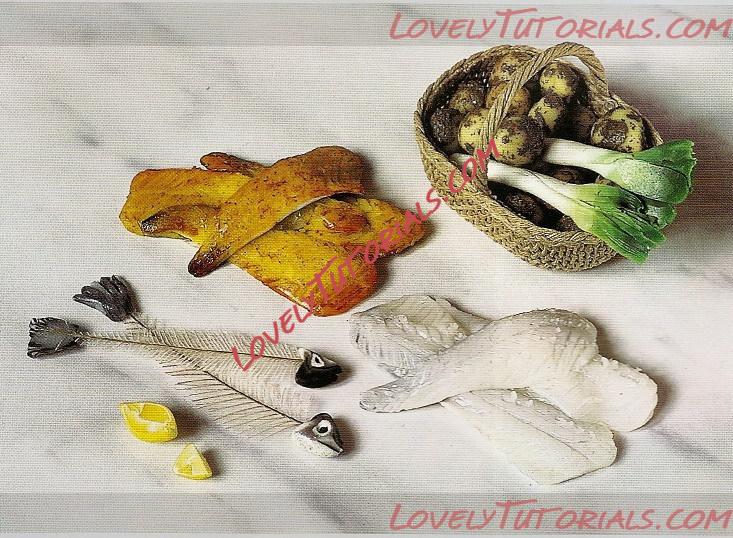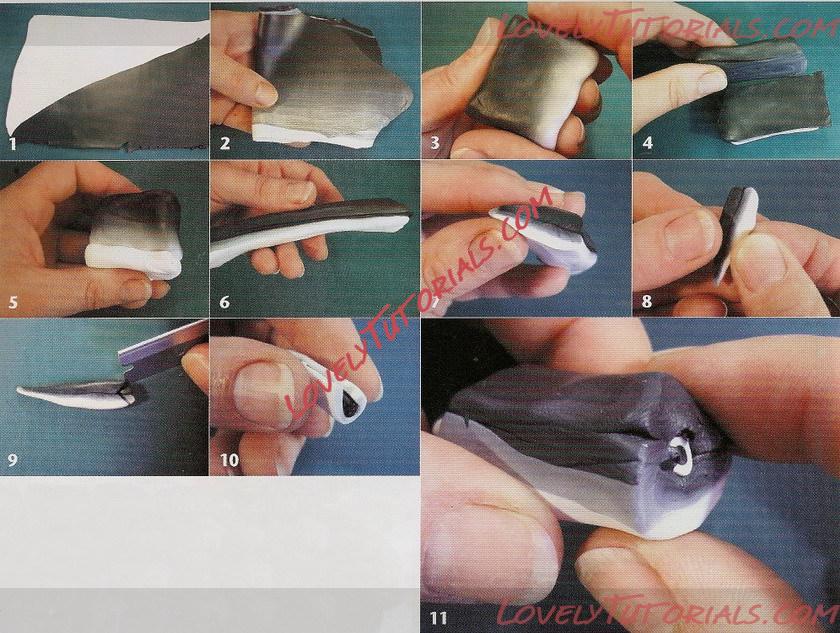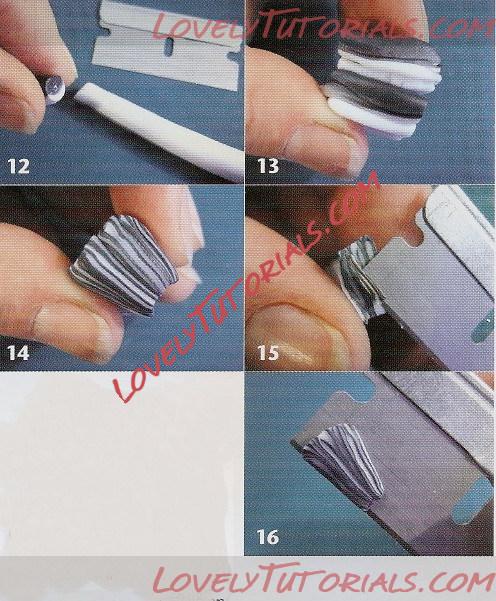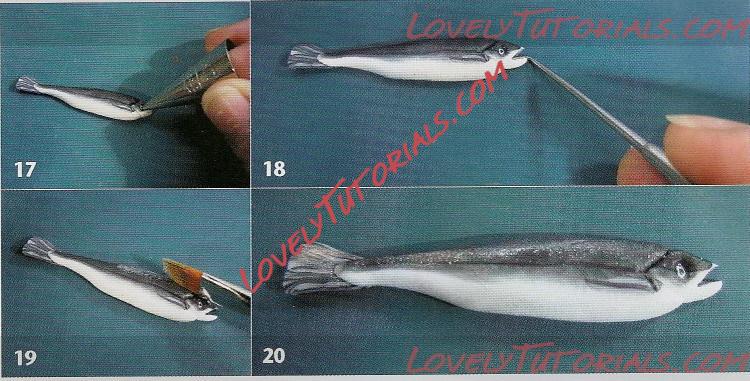Огромная благодарность
Angie Scarr за Мастер-класс
With these fishy projects, I return to the shading techniques but with a new twist. We make several separate canes which are then combined to form a whole fish, and then expand on this idea further by using the same canes again for different, but related, items.




Method
1 -3 Using the Skinner shading technique, make up a graduated stack of black through grey to white clay.
4 Cut through the middle of this stack and add a thin line of black. Join the two halves together again.
5 Add extra white to the bottom to represent the belly of the fish.
6 Very firmly press this down and start to lengthen by alternately squeezing and stretching the cube into a strip with one narrow edge.
7 Form your perfectly lengthened piece of clay into a fillet-like shape.
8 Cut this into thickish slices and Start to give it a squeeze until you get a nicely rounded fish profile.
9 Ensuring the black stays at the top and white at the bottom, cut out a triangle section to insert the head.
10 To make a head cane for the fish, first make an eye section with a roll of black clay wrapped in white.
11 Use about 2.5cm from one end of the body cane. Cut through it laterally at the black line. Insert the eye cane and close it up once again. Roll it until it is very narrow, approximately lcm 0iin) wide.
12 Cut a slice of the head and make a diamond shape out of it, just nipping it together and carefully maintaining the correct shape of the fish eye.
13 The tail fin is made from a stack of black and grey mix clay and translucent, but mostly the latter to give it a sheen. Translucent Fimo is a little stronger and more flexible than the other colours.
14 Cut a thin slice from the mix. Tuck it under the body section and press it firmly into a tail-like shape.
15 and 16 Use some of
the same material for the little side and top fins.
17 Accentuate the eye of the fish using a bugle bead or perhaps a narrow-ended icing tool.
18 Make a turned-down mouth with a dental tool or a cocktail stick.
19 To give your haddock a little subtle sheen and to simulate the scales, brush it very lightly with Fimo silver powder. Glaze lightly with clear varnish.
20 Your haddock is now complete and ready to display.
For cod
Substitute the black and grey with shades of brown and make the line a bit lighter.